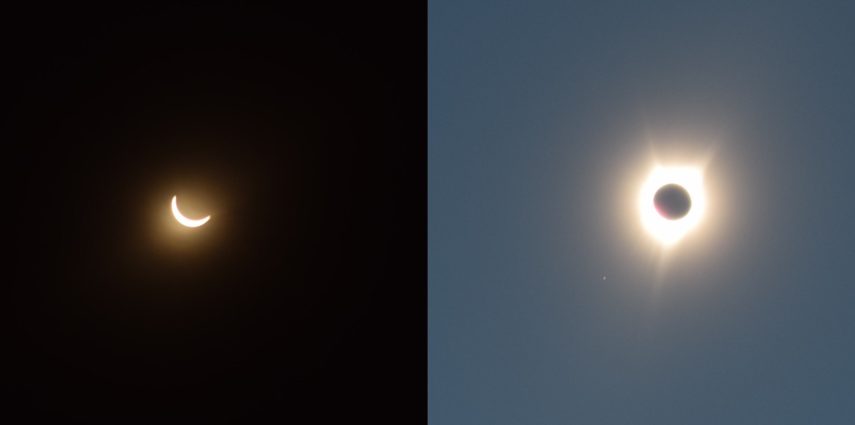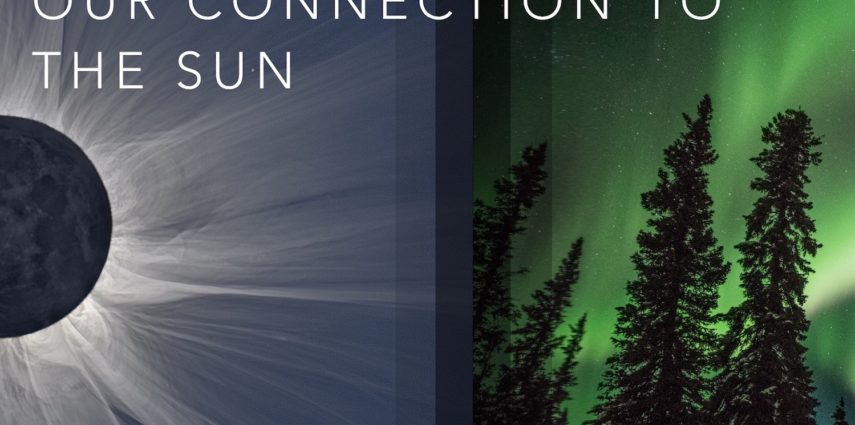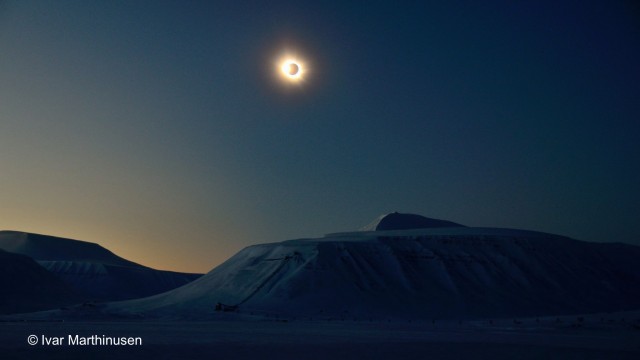Last Friday was an extraordinary day. Eclipse day. I awoke to mostly clear weather and couldn’t quite believe our luck. As I walked down through Longyearbyen towards the university (UNIS) just before seven o’clock, there was a large lenticular cloud hugging the summit of the mountain across the fjord, and some wispy, pink cirrus clouds up high. Otherwise the sky was blue. I met my friend Pål (pronounced Paul) at UNIS, an optics specialist in the atmospheric physics group, and we went across to the old aurora station in Adventdalen. Visiting scientists were there setting up their equipment for imaging and spectroscopy, and the Norwegian broadcaster NRK was preparing for a live broadcast. Pål set up his telescope and camera. The clouds disappeared and the sky became a perfect blue, the sun shining strong and clear and reflecting brightly around the snowy mountain landscape. Read more
What is a total solar eclipse?
A total solar eclipse is a fascinating and beautiful phenomenon and creates unique conditions for scientific measurement. But what exactly is it?



